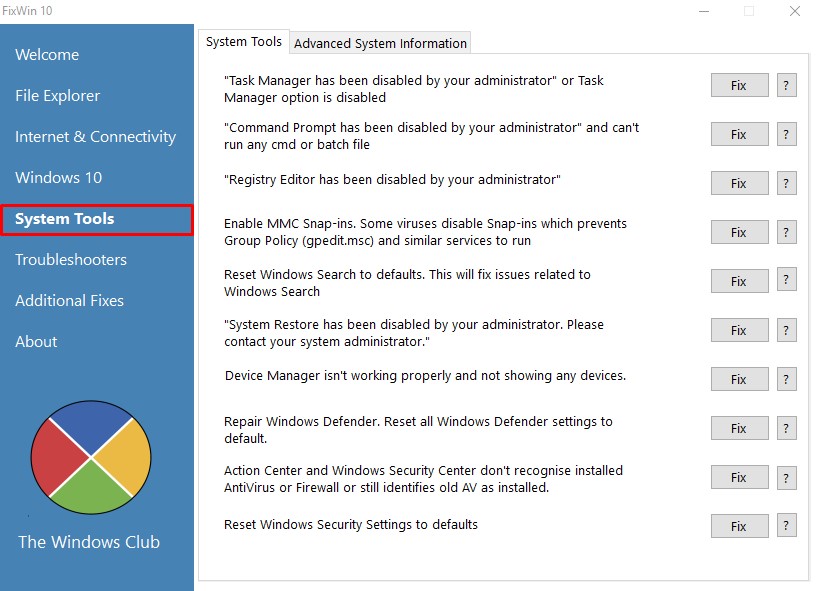


If System Restore is not working and system restore points are not created, you may want to open Run box from the WinX menu, type services. This command enables System Restore on the C: drive of the local computer. So run the following command in an elevated PowerShell window: PS C:\> Enable-ComputerRestore -Drive "C:\" You may also use the Enable-ComputerRestore cmdlet. If the Turn on System Protection option is greyed out or missing on your Windows computer, maybe System Restore is disabled by your system administrator. Turn on System Protection is greyed out or missing Do that and check if it has been created. Having done this, you will want to immediately create a system restore point first. That’s it! You will have enabled System Restore on Windows 10/8/7. Select Turn on system protection and click on Apply. If not, select the System Drive or C Drive and press the Configure button. Under System Protection tab, you will see the Protection Settings.Įnsure that Protection is set to ‘On’ for the System drive. In the left pane, you will see System protection. Click on System to open Control Panel’s System applet. To check if your System Restore has been disabled or not, type Control Panel in Start Search and hit Enter to open it. This post will show you how to turn on and enable System Restore in Windows 10. It is therefore imperative that all users check if System Restore is enabled on their systems and if not to turn it on. When you try to run System Restore, you may see a message: You must enable system protection on this drive

But some users who upgraded their computers to Windows 10 are reporting that their System Restore feature was turned off. By default, System Restore is enabled on all Windows operating systems, including Windows 10. It captures resident programs, their settings, and Windows Registry as an image and backs up a few things that are necessary to reconstruct the system drive to the point – if you opt to go back. System Restore is different from System Backup.


 0 kommentar(er)
0 kommentar(er)
